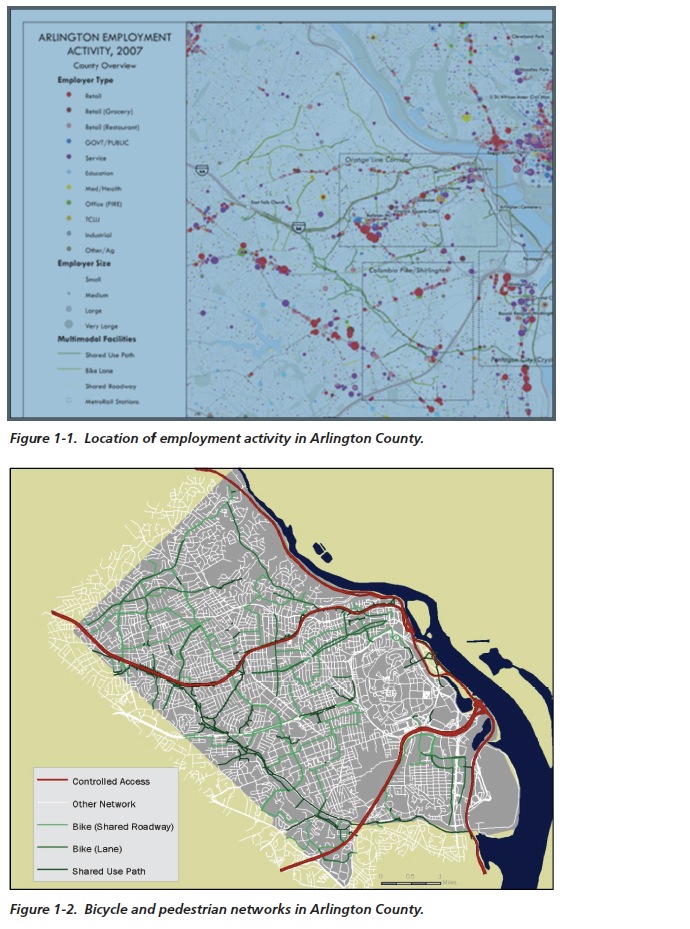NATIONAL COOPERATIVE HIGHWAY RESEARCH PROGRAM
This guidebook is the product of NCHRP Project 08-78, a multi-year research project tasked with developing improved methods for estimating bicycling and walking for planning and project development. The project was in response to widely acknowledged needs for more robust and responsive analytic tools to support bicycle and pedestrian planning. These needs range from more realistic accounting for non-motorized travel in regional planning to the design of mixed-use communities and multimodal corridors and, ultimately, to the design of efficient and safe non-motorized travel networks and individual facilities.
Despite steadily growing interest in non-motorized travel, not only as serious transportation modes unto themselves but because of the strong supporting role they play in the viability of transit and compact mixed-use development concepts, planning and analysis tools have not kept pace with demand. Although there has been considerable research on key factor relationships, this body of knowledge has not made its way into conventional practice. The goal of NCHRP Project 08-78 was to assess this knowledge, identify major gaps, and attempt to transform key lessons into serviceable planning tools.
- Planners and analysts have been seeking ways to address the following issues:
- How to predict whether a person will choose walking or biking as travel mode.
- How important the traveler’s sociodemographic characteristics (e.g., age, gender, income, education, and vehicle ownership) are in this decision versus other factors in the environment.
- The relative appeal of walking or biking for particular trip purposes (e.g., travel to work/ school versus shopping, personal business, social activities, or recreation).
- The degree to which travelers will choose to travel to a local opportunity by walking or biking versus driving to a more remote opportunity, and the effect of that choice on vehicle trip generation and vehicle miles of travel (VMT).
- The role of non-motorized travel in the viability of compact, mixed-use (smart growth) development designs and transit-oriented development.
- The importance of non-motorized access (at both trip ends) in the viability of transit.
- The influence of non-motorized travel opportunities at the destination end of a trip in determining the mode that will be used for the initial trip (e.g., travel to work, shopping).
- Determining the types and location of improvements to a bicycle or pedestrian network that will produce the greatest overall benefits.
Current analytic options for estimating bicycle or pedestrian travel demand tend to fall into one of the following two categories:
- Regional travel forecasting tools, such as are used by metropolitan planning organizations (MPOs), which are thorough but operate at a level of aggregation (traffic analysis zones [TAZs]) incompatible with the scale of non-motorized travel.
- Facility-demand models, which are constructed to directly explain count-based levels of user activity at intersections or on links through association with descriptive measures of the local environment.
Download full version (PDF): Estimating Bicycling and Walking for Planning and Project Development
About the National Cooperative Highway Research Program
www.trb.org/NCHRP
A forum for coordinated and collaborative research, the National Cooperative Highway Research Program (NCHRP) addresses issues integral to the state Departments of Transportation (DOTs) and transportation professionals at all levels of government and the private sector. The NCHRP provides practical, ready-to-implement solutions to pressing problems facing the industry.
The NCHRP is administered by the Transportation Research Board (TRB) and sponsored by the member departments (i.e., individual state departments of transportation) of the American Association of State Highway and Transportation Officials (AASHTO), in cooperation with the Federal Highway Administration (FHWA). Individual projects are conducted by contractors with oversight provided by volunteer panels of expert stakeholders.
Tags: Bicycling, Cycling, National Academies, NATIONAL COOPERATIVE HIGHWAY RESEARCH PROGRAM, NCHRP, Pedestrian, Transportation Research Board, TRB, TRB of NA, Walking







 RSS Feed
RSS Feed